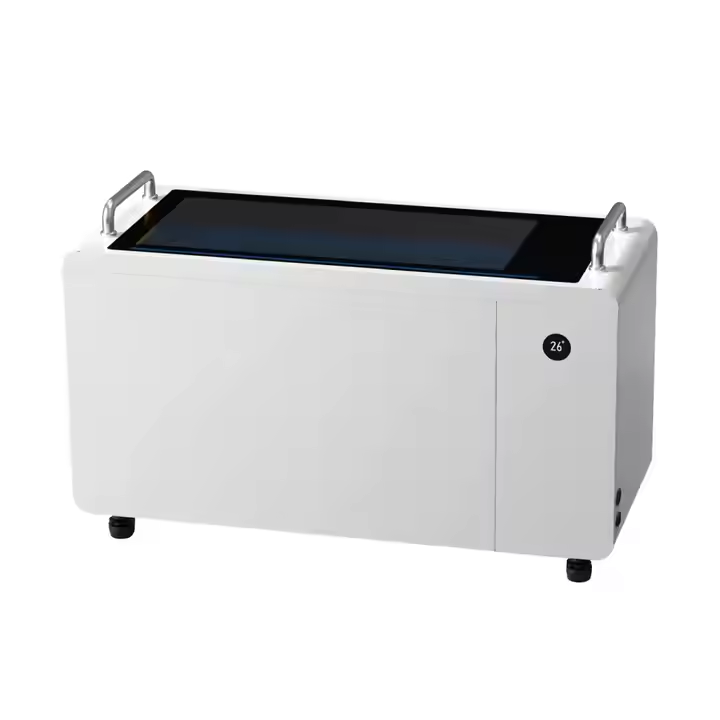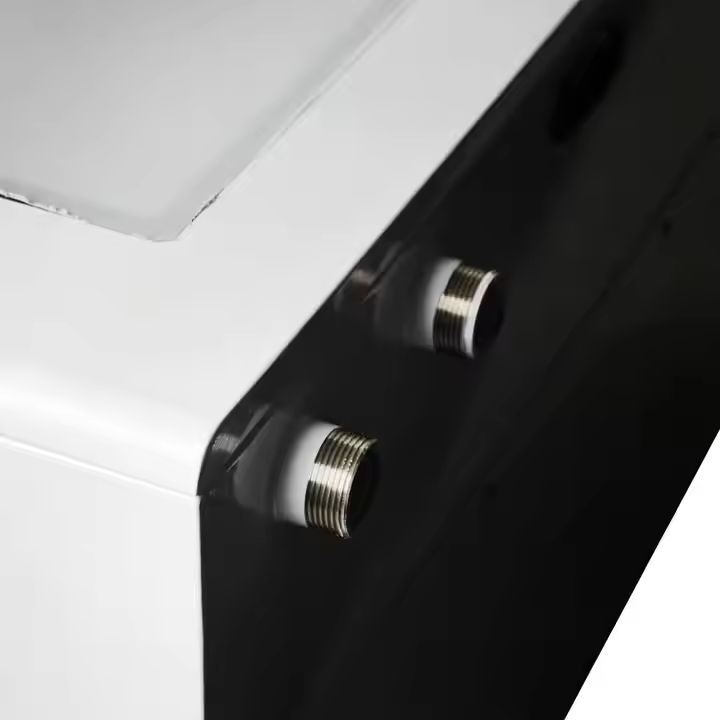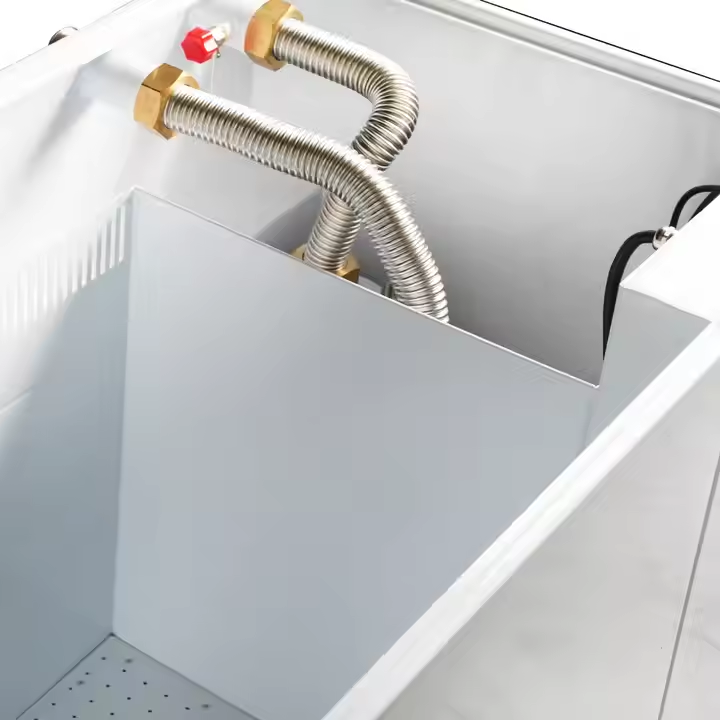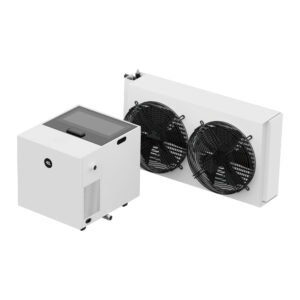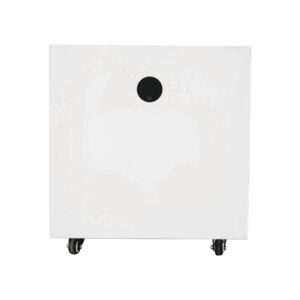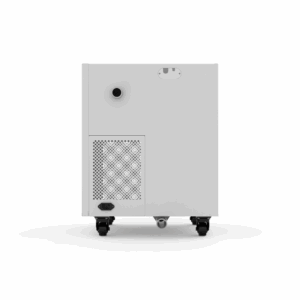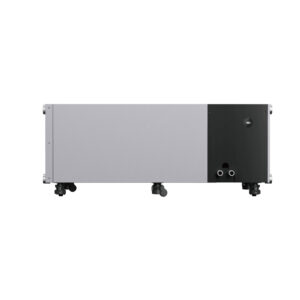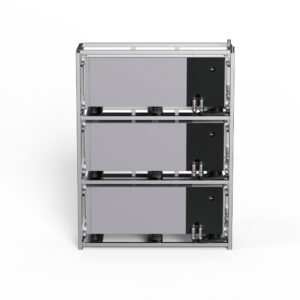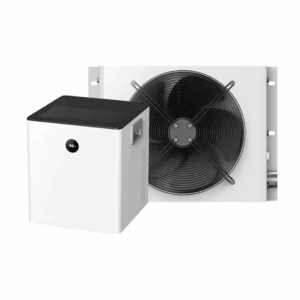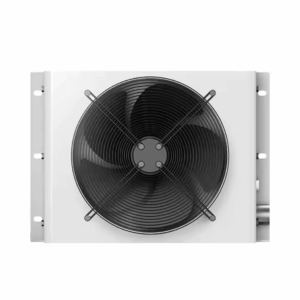High-Power Immersion Cooling Systems for Computers
This high-power Immersion Cooling System handles up to a 30kW thermal load. A complete solution, this self-contained tank submerges hardware for superior cooling. It features a robust copper and aluminum heatsink and a digital temperature display for real-time monitoring.
Revolutionize Your Computing with High-Power Immersion Cooling Systems
In the relentless pursuit of computational power, from sprawling data centers to high-performance scientific computing, the challenge of thermal management has become a critical bottleneck. Traditional air-cooling methods are increasingly reaching their limits, proving to be inefficient, noisy, and costly when faced with the extreme heat generated by modern, high-density processors. Enter the future of thermal management: High-Power Immersion Cooling Systems. This cutting-edge technology represents a paradigm shift, offering a powerful, efficient, and silent solution to unlock the full potential of your computational hardware. By completely submersing electronic components in a specially formulated dielectric fluid, these systems provide a level of cooling that air could never achieve.
This professionally engineered, self-contained unit is designed to meet the most demanding thermal challenges. With a formidable capacity to handle a 30kW thermal load, it is purpose-built for applications where performance and reliability are non-negotiable. The system’s architecture is a testament to sophisticated engineering, integrating a robust tank, an advanced internal heat exchanger, and user-friendly monitoring into a sleek, mobile chassis.
A Closer Look at Superior Design and Functionality
At the heart of this system is the principle of single-phase immersion cooling. Unlike two-phase systems that involve boiling the coolant, this method circulates a dielectric liquid that remains in its fluid state, absorbing heat directly from the components. This approach is not only simpler and more cost-effective but also easier to maintain. The process is elegantly straightforward: your servers, GPUs, or other high-performance hardware are placed directly into the tank, which is filled with a non-conductive, dielectric fluid. This fluid, which can be a synthetic hydrocarbon or engineered oil, has a thermal conductivity far superior to air, allowing it to absorb and transfer heat with remarkable efficiency.
The heated fluid is then circulated through the integrated heat exchanger, visible as the pair of flexible, corrugated copper and aluminum pipes. These materials are chosen for their excellent thermal conductivity. This heat exchanger is connected via the external ports to a facility’s water loop or an external dry cooler, where the heat is dissipated. The now-cooled fluid is then returned to the tank, creating a continuous and highly effective cooling cycle.
This all-in-one system is designed for ease of use and integration. It features a clear digital temperature display on the front panel, providing real-time monitoring of the fluid temperature to ensure optimal operating conditions. The unit is also equipped with sturdy casters, allowing for easy mobility and placement within your facility. The clean, white, enclosed design not only protects the internal components but also contributes to a more organized and professional environment.
Unparalleled Advantages of Immersion Cooling
The transition to an immersion cooling solution offers a multitude of benefits that extend far beyond simple temperature reduction.
- Enhanced Performance and Overclocking Potential: By maintaining hardware at stable, low operating temperatures, these systems eliminate thermal throttling. This allows CPUs and GPUs to consistently run at their peak performance. For enthusiasts and crypto miners, this stable thermal environment unlocks significant overclocking potential, pushing hardware beyond its standard specifications to maximize computational output and profitability.
- Drastic Energy and Cost Savings: Immersion cooling is vastly more energy-efficient than traditional air cooling. It eliminates the need for energy-intensive components like server fans, computer room air conditioners (CRACs), and large air handlers. This can lead to a reduction in cooling energy consumption by up to 95% and a significant improvement in Power Usage Effectiveness (PUE), a key metric for data center efficiency. The result is a substantial decrease in operational expenditures and a lower total cost of ownership.
- Increased Hardware Density and Space Efficiency: Because liquid is so effective at heat dissipation, components can be packed much more closely together. This technology allows for much higher rack power densities, enabling data centers and computing facilities to maximize their computational power within a smaller physical footprint. For edge computing deployments in space-constrained urban areas, this is a game-changing advantage.
- Silent Operation: One of the most immediately noticeable benefits is the near-silent operation. By removing the need for high-velocity fans, these systems create a significantly quieter working environment, which is a major advantage for office-based data centers and research labs.
- Improved Hardware Reliability and Longevity: The dielectric fluid protects sensitive electronic components from environmental hazards such as dust, humidity, and vibration. This protection, combined with the elimination of thermal stress from drastic temperature fluctuations, significantly reduces wear and tear, leading to a longer hardware lifespan and reduced maintenance costs.
Applications Across High-Stakes Industries
The immense power and efficiency of this 30kW Immersion Cooling System make it the ideal solution for a wide range of demanding applications:
- Data Centers: For enterprise data centers struggling with rising power densities and energy costs, immersion cooling offers a sustainable path to expansion and efficiency.
- High-Performance Computing (HPC): In fields like scientific research, financial modeling, and engineering simulations that rely on supercomputers, this cooling technology is essential for handling the extreme heat generated by complex calculations.
- Cryptocurrency Mining: The profitability of crypto mining is directly tied to hashrate and energy cost. Immersion cooling allows miners to safely overclock their ASICs and GPUs for maximum performance while dramatically cutting electricity bills, providing a critical competitive edge.
- Artificial Intelligence and Machine Learning: AI and ML workloads require massive, sustained processing power. Immersion cooling ensures that the underlying hardware can perform reliably without thermal degradation, accelerating innovation and discovery.

